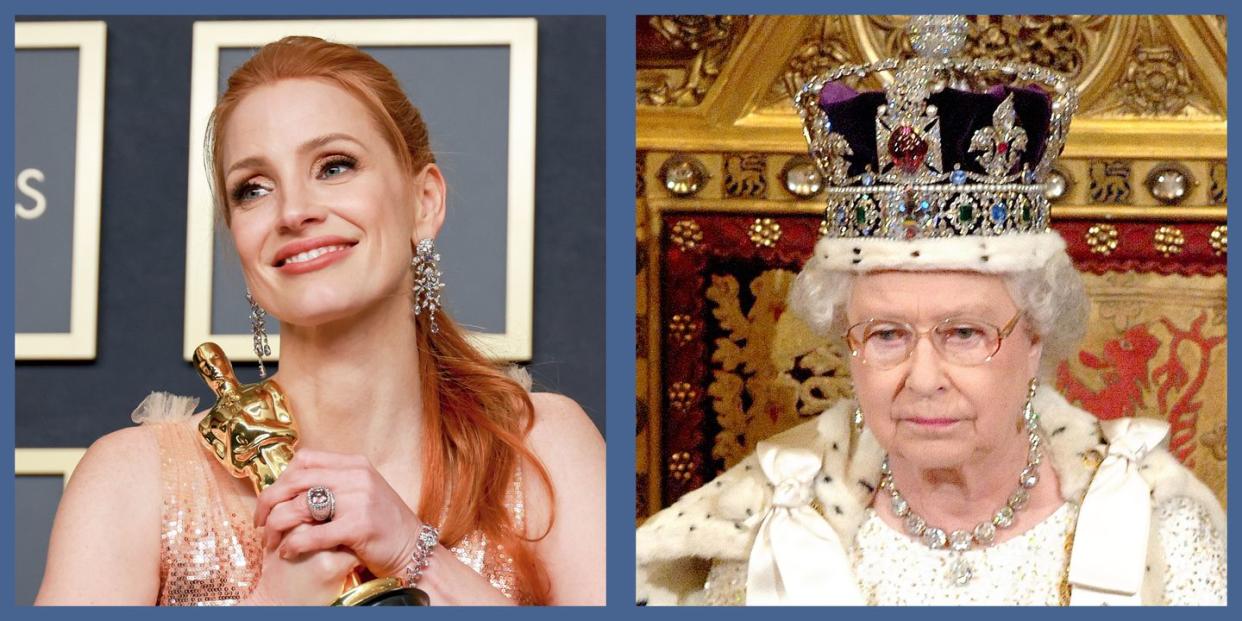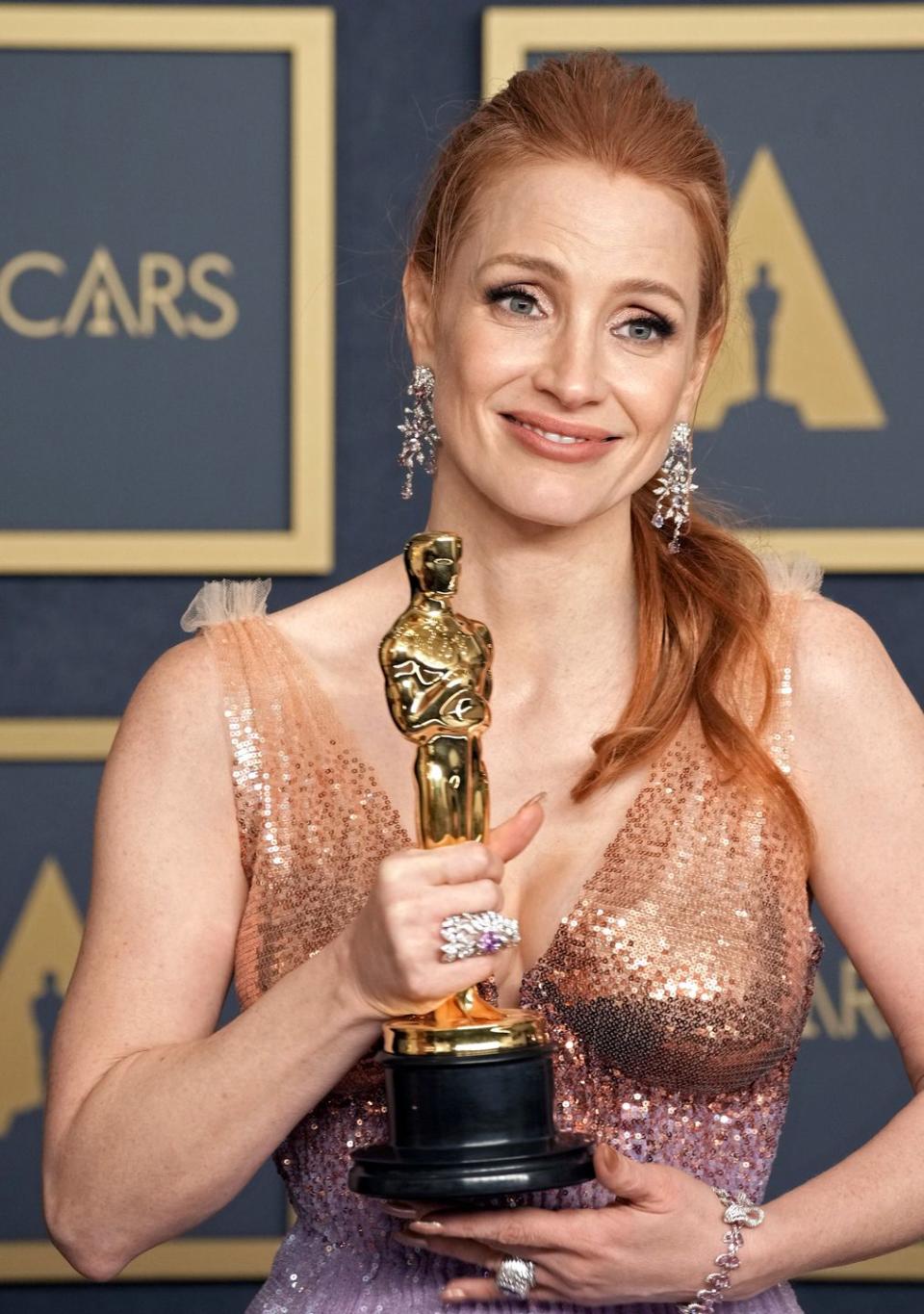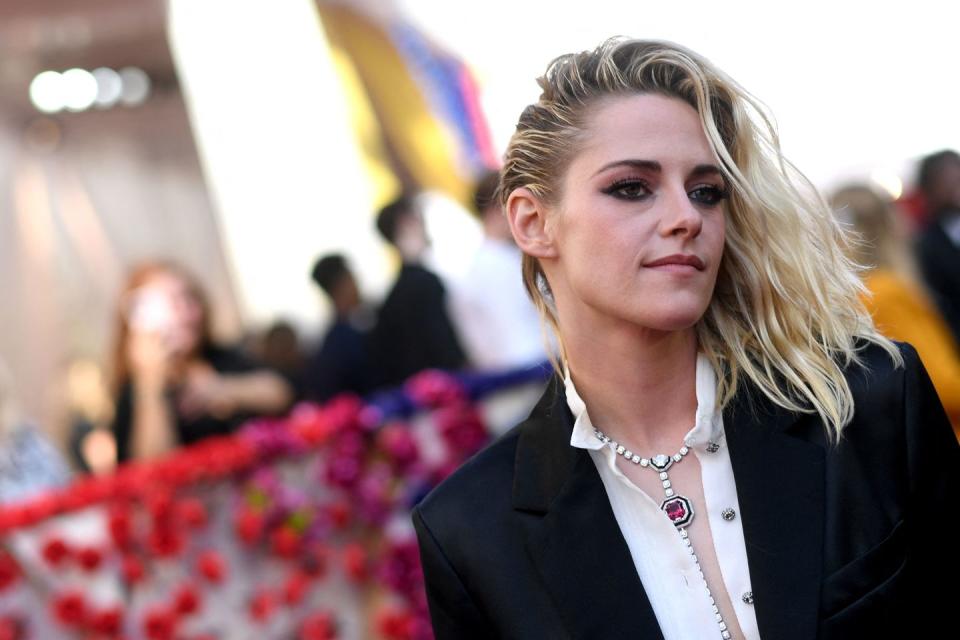Jessica Chastain Channeled the Queen in an Unexpected Way at the Oscars

- Oops!Something went wrong.Please try again later.
In the sea of some excellent white diamond necklaces—Ariana De Bose’s De Beers, Lady Gaga’s Tiffany, Zendaya’s Bulgari, Zoe Kravit’s Kwiat—you might have noticed something different happening on one Best Actress nominee. And if you analyzed Jessica Chastain’s Gucci earrings on the red capet—or maybe her bracelet, her rings?—you might have wondered about those stones. Were they rubies, pink or purple sapphires? A rainbow of tourmalines? You would have been wrong, but that’s ok. People have done the same for centuries. But from now on, when you see a stone in shades of reds or pinks or lilac occasionally, ask first, if it possibly, could it perhaps be, a spinel?
The answer would have been yes if you had inquired about the Gucci High Jewelry suite Oscar winner Jessica Chastain wore to the ceremony. Her earrings showcased almost all the shades of spinel, her ring was centered by a lilac stone, and her bracelet a pink spinel.
In an interview with T&C after the unveiling of his second High Jewelry collection for the Italian label, designer Alessandro Michele, himself a jewelry connoisseur and collector, spoke about his reverence for stones, and for history. His use of spinels speaks to both passions.
They are prized for their color and their rarity and were long a stone jewelry snobs would use to challenge each other’s knowledge. (If you saw a red stone and didn’t ask if it was ruby or spinel did you even really know jewelry at all?) Though they have been mined for centuries in Sri Lanka, Afghanistan, Myanmar, Vietnam, and Thailand, spinel didn’t get its formal classification until 1783 when a mineralogist discovered that these sparkling red stones were not in fact rubies. They were something else entirely, though they looked a lot alike. Which is where the Queen, and generations of British royals come in. And also Kristen Stewart.

The Imperial State Crown, that ultimate showcase of majestic jewels, memorably seen in Cecil Beaton’s coronation portrait of Queen Elizabeth, and in the Tower of London, has at its center, a 170 carat red spinel, that was, and is still, known as the Black Prince’s Ruby. That large red stone at the center of the Imperial State Crown has been there from the time the crown was re-imagined for Queen Victoria in 1838. But it had been making the royal rounds long before.
The “Black Prince’s Ruby” was worn on battlefields by Henry V at Agincourt (where it might have saved him: when the king was struck in the head not only did he survive but so did the stone) and Richard III at the Battle of Bosworth (where it didn’t bring quite the same kind of luck). There is evidence it was part of Henry VIII’s treasure trove as well. But most famously, it is the red stone above the Cullinan II diamond on the Imperial State Crown. It is said to have been stolen in 1371 from the body of the Sultan of Grenada by Pedro the Cruel. Edward of Woodstock (the Black Prince) offered Don Pedro shelter; Don Pedro offered the Black Prince untold treasures, including one massive red stone, in return.
So now that we have established the parallel jewels of last night’s Best Actress winner and the reigning Queen of England, how does the actress who played her daughter in law Princess Diana come in? Though most people focused on Kristen Stewart’s Chanel short shorts, jewelry sleuths were zeroing in on her Chanel necklace. Was that a ruby at its center? Oh no, please. That necklace is Chanel High Jewelry. It’s a spinel.

You Might Also Like

